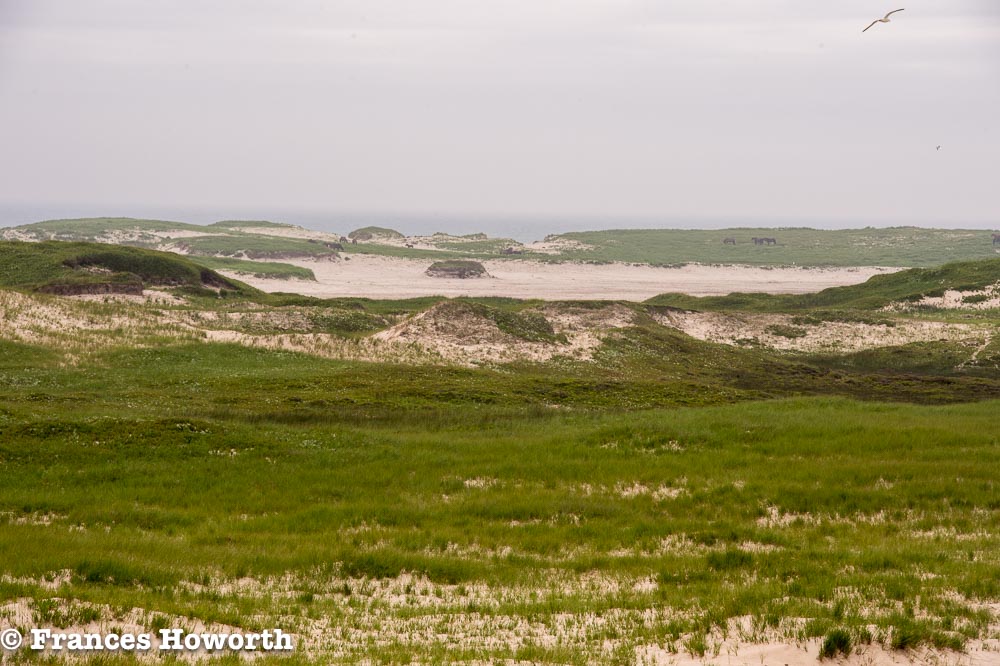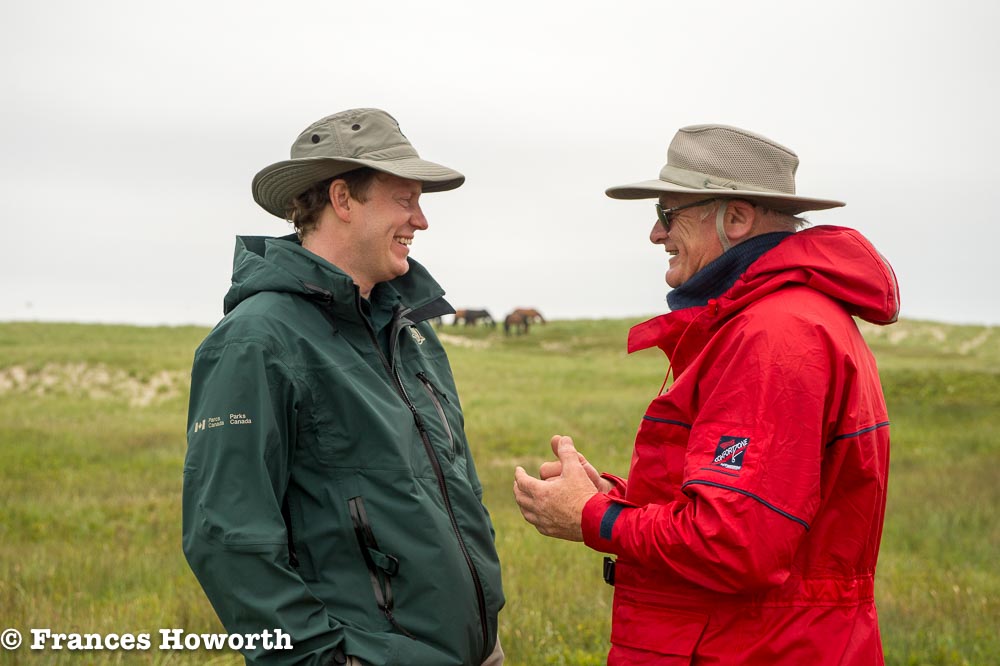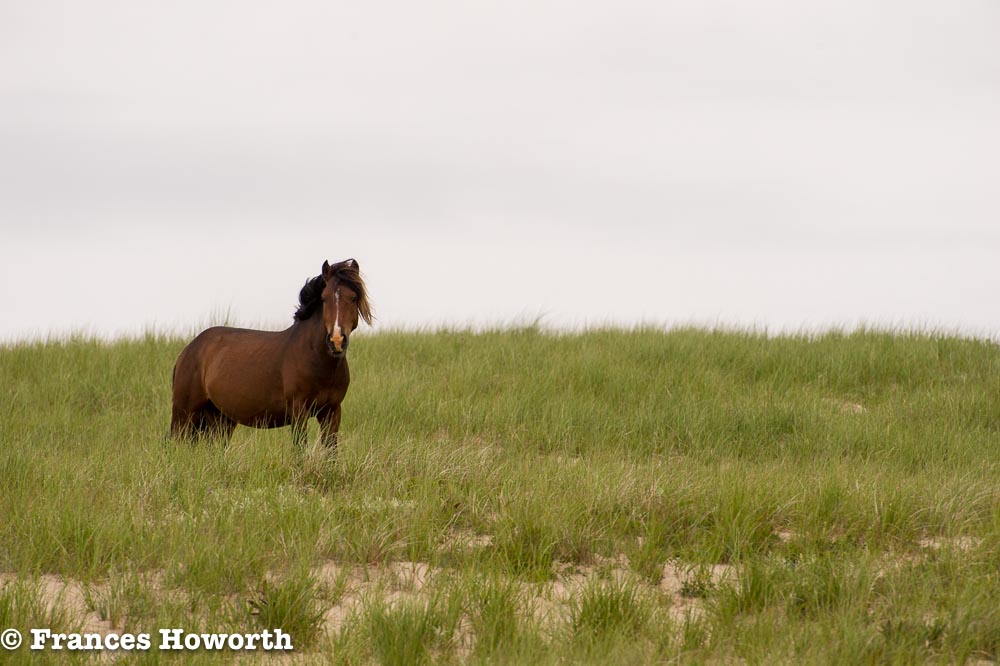Creeping out of Louisbourg in thick fog to the mournful sounds of the ship’s foghorn, our voyage to Sable Island begins.
The long low island sits on the edge of the Continental Shelf in the North Atlantic.
It is a vegetated sand bar approximately 165 nm off the coast of Halifax that is roughly 25 miles in length, and a little over half a mile at its widest point.
The Island’s unique topography and dune system owe their existence to the sand-anchoring properties of vegetation.
Approximately one third of the island is vegetated and most of the native flora of Sable Island is typical to similar dune environments found along the eastern North American seaboard.
From about the 16th century, domestic animals, including horses, cattle, goats and rabbits, have been released on the island.
Little is known of the ecology prior to this period.
Currently, the only introduced mammal on the island is the feral horse. It is believed that the horses were introduced here sometime around 1740 by sailors or traders who intended to return and retrieve them but never did
Despite the harsh conditions the horses have survived and latest estimates place their numbers at around 350.
The horses are dependent upon the island’s vegetation for their nutrition, but supplement their diet with kelp and seaweed that wash up on the beach. They can and do dig for fresh water, which they use to supplement the supplies found elsewhere on the island in freshwater pools.
Now a national park administered by Parks Canada the island is home to the world’s largest breeding colony of grey seals. There is also a small resident population of harbour seals.
Other visitors include ringed, harp and hooded seals; however it is known that these animals do not breed on the island.
Sable Island is part of a key migratory flyway, with numerous bird species with over 350 recorded. These include species similar to those found on the mainland.
We are grateful to Destination Canada, Air Canada and ship operators One Ocean Expeditions for kindly hosting us on this trip



